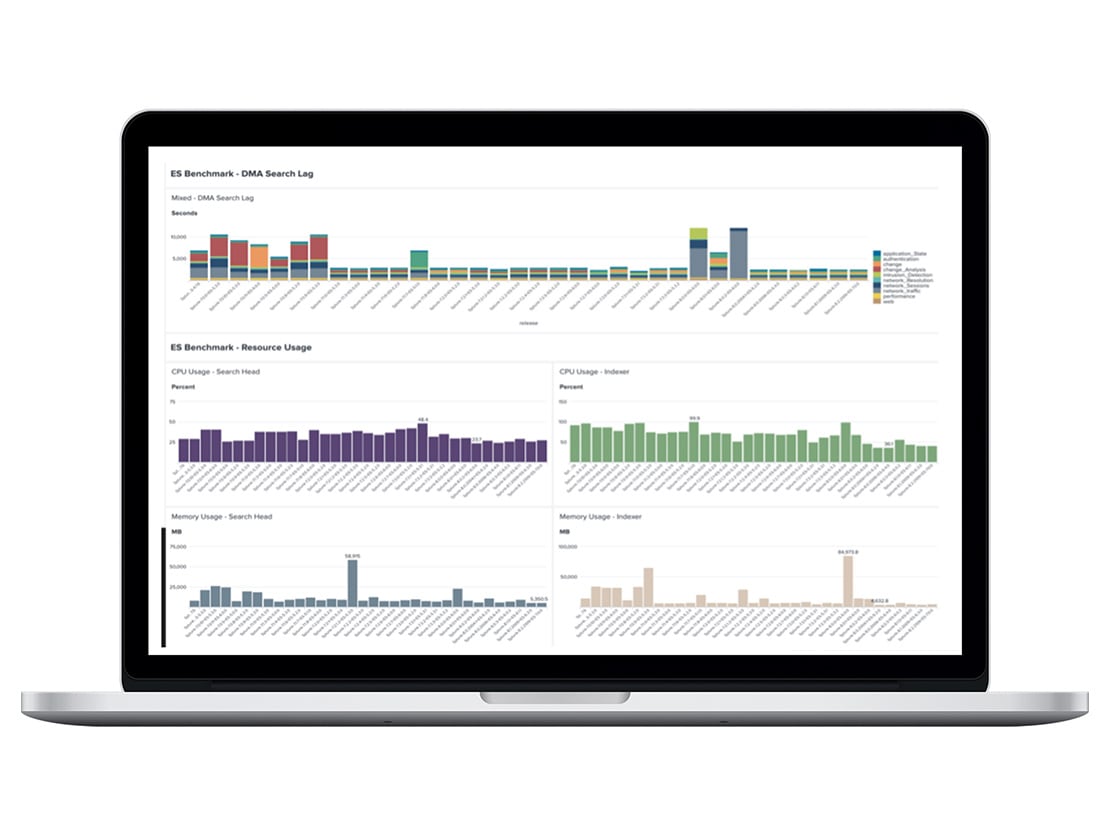Our engineers find the Splunk platform is the best tool to handle unstructured data — whether test data, logs, results or metadata — so we can easily create dashboards and continuously optimize performance for our users
Splunk engineers need visibility across multiple environments to ensure excellent customer experiences across all our offerings — from the products we build and maintain to the web experience we provide to customers.
Splunk gives our teams full-fidelity visibility to draw insights faster, deliver a smoother experience on our website and pioneer innovative products that help both us and our customers be resilient.
A customer-first business needs to be technology-first, too.
Splunk is committed to finding and implementing the best ways to get the best version of our products in our customers’ (and Splunkers’) hands. To manage Splunk’s expansive, hybrid environment, our teams use our own products to stay ahead of issues — continuously iterating to make sure insights immediately improve subsequent releases.
Over 90 of Fortune 100 companies have deployed Splunk in their environment — and they, like us, are looking for ways to grow while operating at a global scale. Vital to this endeavor is Splunk’s DevOps team, who is committed to improving customer experience through excellent, pioneering product development. These efforts, which have resulted in over 1,000 patents, would not be possible without our own products in our corner.
Outcomes
Driving memory usage to a historical low
Splunk’s product performance team has a need for speed. Team members are constantly looking for ways to improve product performance, with the goal of making each release smoother than the last — benefitting Splunkers and our customers alike. Their recipe for success? Hard work and a built-in feedback loop to apply insights learned from each release to subsequent ones — all powered by the Splunk platform, of course.
With the team’s “Are We Fast, Yet?” Splunk dashboard, each member can visualize data across an array of variables like CPU and memory in real time — boosting performance by identifying points of improvements as well as degradations. When the dashboard’s indexer function alerted the team to a massive degradation in memory usage in a recent software release, the team quickly troubleshooted and delayed the release until the issue was solved. The team then used those learnings to optimize subsequent software releases, reducing memory usage to a historical low of 4.6kMB — improving performance by a whopping 95%.
Delivering a faster website experience for visitors
Website development is a journey, not a destination. There are always new ways to improve on visitor experience, and no one at Splunk is more aware of that than our own web team. The Splunk web engineering team wanted to optimize user experience across Splunk’s web properties, including splunk.com, our .conf websites and multiple Splunk internal portals. To do this, over 65 servers and stacks and 750,000 lines of code need to be running smoothly. No pressure.
With Splunk Synthetic Monitoring, the team now benchmarks web page performance and monitors metrics like availability, uptime, user experience and critical APIs in real time. This visibility helps the team localize outages and issues for a better user experience and faster resolution.
Thanks to these efficiencies, the team can pinpoint any issues with ease. When a “502 Bad Gateway” was recently triggered across all microservice endpoints, for example, the team immediately tracked the issue and quickly submitted a trouble ticket to AWS. The incident was resolved in under 90 minutes, with fewer than 900 visitors affected.
RUM, don’t walk, toward increased efficiency
Using Splunk Synthetic Monitoring, the web team quickly saw massive improvements across almost every aspect of its operations, including 50% faster page load times, a 60% improvement in Core Web Vitals — the metrics that score a user’s experience when loading a webpage — and 30% fewer priority tickets.
With Splunk Synthetic Monitoring and Splunk Real User Monitoring, the team has also seen a 25% increase in efficiency — giving more time back to the team for new and business-critical projects. So far, we’ve seen the highest uptime — greater than 99.999% — we’ve ever experienced on our website. And with Splunk products supporting our work, the sky’s the limit.



